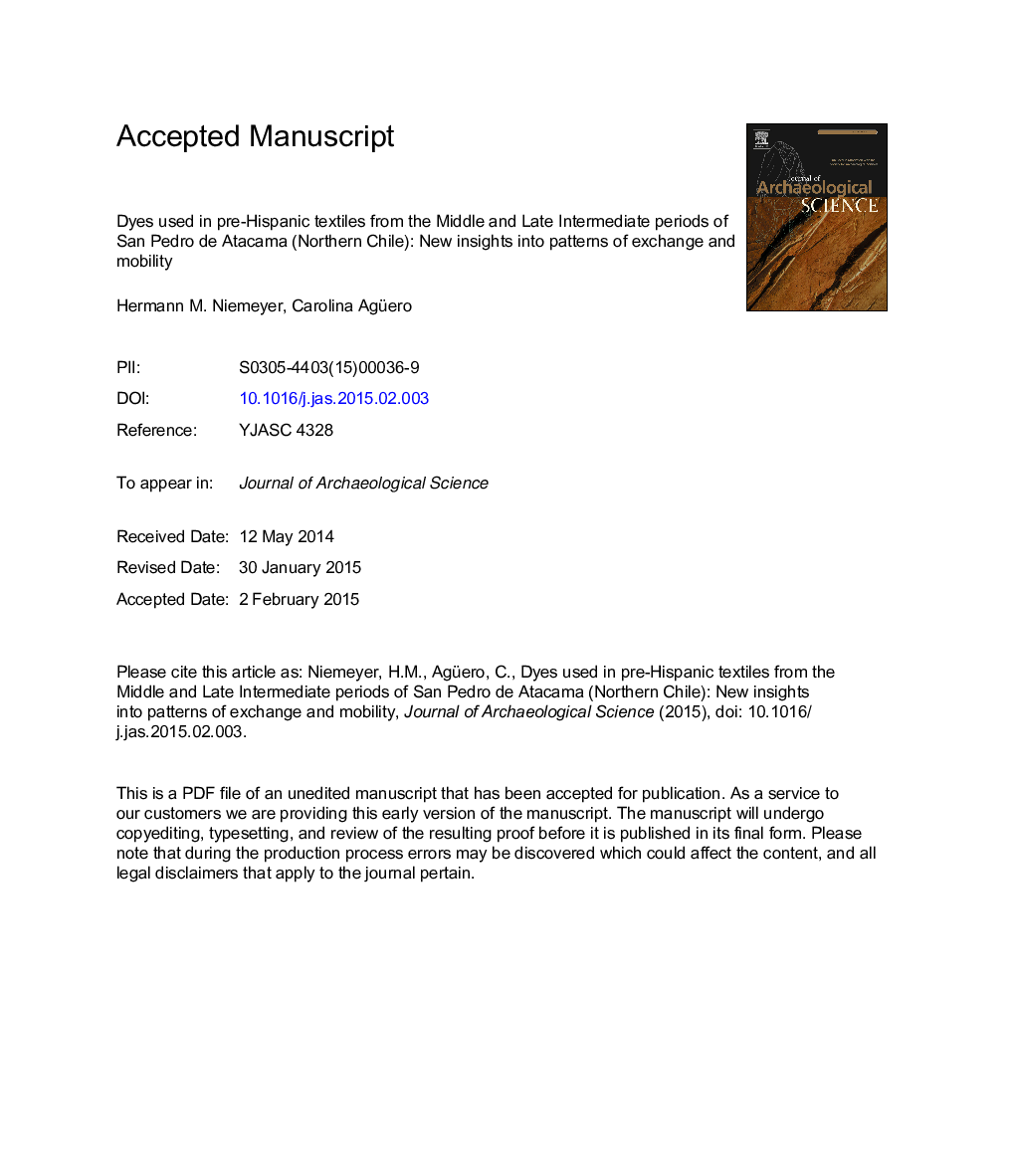| Article ID | Journal | Published Year | Pages | File Type |
|---|---|---|---|---|
| 7441958 | Journal of Archaeological Science | 2015 | 59 Pages |
Abstract
Pre-Hispanic Andean textiles constitute the longest continuous textile record in the world, their structure and design being one of the most significant markers of group identity in Andean populations. Since the Late Formative Period (ca. 100-400Â AD), the region around San Pedro de Atacama (SPA) in the Atacama desert of northern Chile has been part of a complex and extensive network of interacting polities through which raw materials, agricultural products, goods, people and ideas circulated in the South-Central Andes. The archaeological record in SPA abounds with textiles from various cultures that participated in such network. A study of these textiles would allow intercultural as well as diachronical comparisons. Numerous studies on textiles found in SPA have focused on their technological and iconographic features. This work addresses the identification of the organic dyes employed in the manufacture of 38 textiles found in funerary contexts in SPA from the Middle (ca. 400-1000 A.D.) and the Late Intermediate periods (ca. 1000-1450 A.D.), using high performance liquid chromatography with a diode array detector (HPLC-DAD). Purpurin and not alizarin was found in all red dyed fibers and indigotin (IND) and indirubin (INR) in all blue dyed fibers. Natural sources of these dyes are exogenous to SPA; their importation into SPA lasted for nearly a millennium. A positive correlation was found between [IND]/[INR] concentration ratio and the altitude of the place where the fiber was presumably dyed. Overall, the results indicate that finished garments and also raw dyes and ready-to-use dyed fibers were imported into SPA from neighboring regions and that foreign weavers were possibly active at SPA.
Related Topics
Physical Sciences and Engineering
Materials Science
Materials Science (General)
Authors
Hermann M. Niemeyer, Carolina Agüero,
